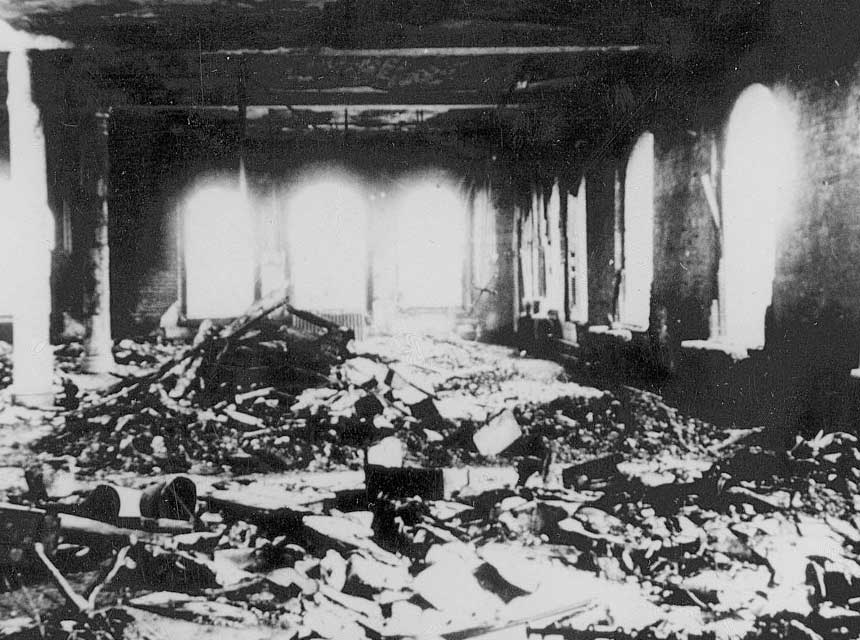
How Did the Triangle Shirtwaist Fire Change History?
On March 25, 1911—exactly 110 years ago today—a fire broke out in the Triangle Shirtwaist Factory in lower Manhattan. Hundreds of workers, primarily young, immigrant women, were locked inside the sweatshop. The locked doors were intentional: they were intended to keep the women working, even under unsafe conditions, and to prevent them from walking off the job. Rather than burn alive, dozens of women jumped from the ninth floor of the building. A total of 146 workers died.
The tragedy at the Triangle Shirtwaist Factory changed the course of workplace safety for decades to come. It galvanized the women’s suffrage movement and led to the creation of workplace safety regulations. Frances Perkins, who witnessed the fire from a friend’s apartment in Manhattan, became Secretary of Labor under Franklin Delano Roosevelt and created the Bureau of Labor Standards, the first federal agency responsible for regulating workplace conditions. (The BLS became OSHA in 1971.)
Progress Has Stalled in Protecting Workers from Unsafe Conditions
While today’s workplace safety battles are less often splashed across front pages, they are no less deadly. The number of workers who die from work-related injuries has increased over recent years; in 2019, 5,333 workers died. These deaths are often preventable and caused by negligence or failure to comply with OSHA regulations. For example, at least one worker per week is killed by “trench cave-ins” while digging trenches, even though the risk is well-known and a variety of recognized techniques nearly eliminate this risk.
This year, the statistics are likely to be much worse. Over the past year, thousands of workers who contracted COVID-19 at work have died from the disease. Employers have done a bad job of protecting employees: over 700 workers at a Farmer John plant in Vernon, California contracted COVID, while Amazon stated in February that nearly 20,000 employees had caught the coronavirus. OSHA has done next to nothing to help workers—as of August, OSHA had received nearly 10,000 COVID-related complaints and issued only four COVID-related citations.
What Protections Exist for Workplace Safety or OSHA Whistleblowers?
While workers are protected from retaliation for raising workplace safety concerns, many employers do not care. They fire workers who speak up and organize for better working conditions. OSHA and the NLRB have become ineffective at combating retaliation. Especially under the Trump administration, both agencies were captured by industry interests, rescinding important guidance and worker protections. The courts have also limited the impact of both laws.
California law provides robust protections against retaliation for reporting workplace safety violations. You cannot be fired for reporting a workplace safety violation to OSHA or any other state agency. You also cannot be fired for complaining internally about unsafe working conditions. If your employer is actually breaking the law, you may be protected from retaliation for refusing to perform tasks impacted by the illegal conditions.
Talk to an Experienced Workplace Safety and OSHA Retaliation Attorney Today
Everyone deserves a safe workplace. That’s why our employment law team is experienced in representing workers who are retaliated against for reporting unsafe working conditions.
If you believe you are a victim of retaliation, please contact us today through our website or give us a call at (213) 465-4802 to schedule a free consultation.

